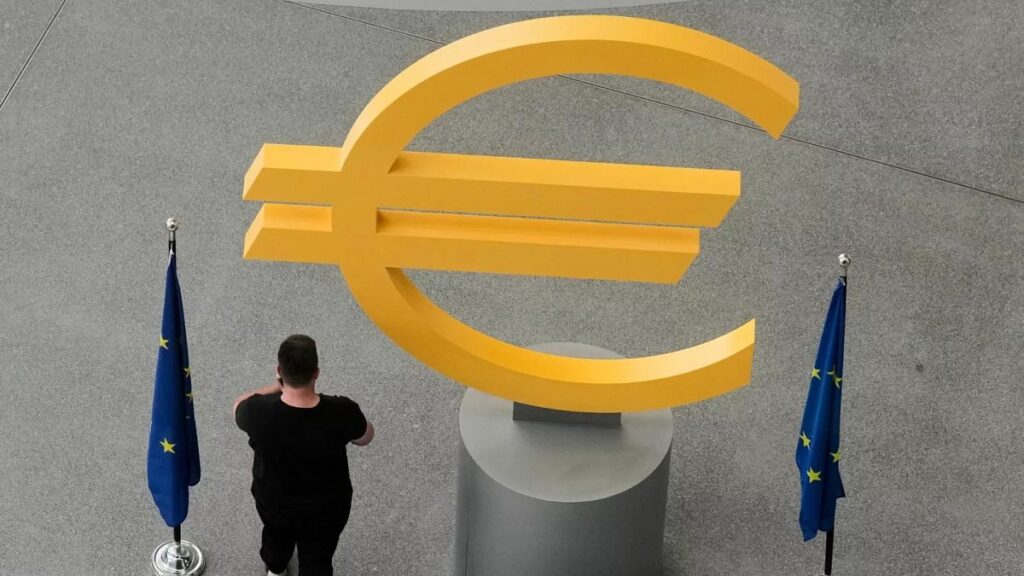Earlier this year, EU leaders urged their finance ministers to speed up talks on the digital euro’s legal framework — and the message has landed.
Throughout July, negotiations in the Council of the EU moved into full swing, with most finance ministers backing the Danish presidency’s goal of reaching a common position by the end of 2025.
But getting there won’t be easy. Several countries still insist that more technical work is needed before taking the next step on this new means of payment.
“We have to find a fair compensation model and good distribution conditions for banks and, of course, we have to offer citizens a high level of privacy protection from day one,” said Germany’s Lars Klingbeil during a July meeting of finance ministers in Brussels.
Privacy and compensation for payment services providers are not the only sticking points. Ministers have also raised concerns about the impact on non-euro countries, the holding limit for the new currency, and even who gets to decide whether the project should go ahead at all.
Sweden has called for a system that isn’t too burdensome for banks outside the eurozone. The Netherlands wants a low holding limit to ensure the digital euro is used strictly as a payment tool. Hungary, meanwhile, is demanding a say on its issuance.
At the start of July, ECB Vice-President Luis de Guindos made clear that no decision on launching the digital euro will be taken until the legal framework is ready. Both the Council and Parliament are working on it. Once the legislation is adopted, the ECB’s governing bodies will decide whether to move ahead — a choice that would then trigger a preparatory phase of around two and a half years.
De Guindos reminded ministers in Brussels of the urgency: Europe must act together to strengthen its financial autonomy.
“Accelerating progress on the digital euro is essential to reduce our growing dependence on the US, as most electronic payment solution providers are US firms,” he said. “Timely adoption of the legislation is therefore crucial in our view.”
Today, 13 out of 20 eurozone countries do not have a national card scheme and instead rely on international providers such as Visa or Mastercard for digital payments.
Adding further pressure, the United States has just approved the so-called Genius Act, overseeing the stablecoin market.
In April, the ECB’s Piero Cipollone stressed that the US government’s promotion of dollar-backed stablecoins “raise[s] concerns for Europe’s financial stability and strategic autonomy” — making plans for a digital euro all the more urgent to protect and strengthen the single currency.
According to a Financial Times report, the ECB — still in its preparation phase for the digital euro until October — is even considering operating it on a public blockchain such as Ethereum or Solana, rather than a private one.
Contacted by Euronews, the ECB said the Eurosystem is experimenting with different technologies — both centralised and decentralised — in the development of the digital euro, including distributed ledger technologies, but no decision has yet been made.
The European Consumer Organisation’s (BEUC) head of financial services, Anna Martin, said the digital euro infrastructure should be built in Europe by European providers. “Current geopolitical uncertainties show very clearly the necessity to reduce Europe’s dependency on non-European providers in strategic areas,” Martin told Euronews.
Still, it takes two to tango — and the other co-legislator, the European Parliament, does not appear to be in any rush.
On 9 February 2024, the former rapporteur on the file, Stefan Berger (Germany/European People’s Party), tabled his draft report. Since then, no vote has been held on the draft, and in December 2024, Berger stepped down as lead MEP on the digital euro file.
He was succeeded by Spain’s EPP MEP Fernando Navarrete, and on 8 April 2025, the ECB’s Piero Cipollone urged MEPs to make progress on the legislative file.
When asked about the halted process, Navarrete did not respond to Euronews’ request for comment by the time of publication.
Read the full article here

